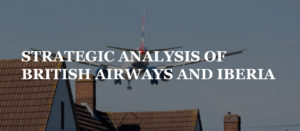Burj Khalifa is the tallest building in the world. It broke the Guinness World Record that was held in the United States. At the Burj Khalifa, visitors to the tallest building in the world in Dubai can now get an even higher view of the Middle Eastern city. The owner of the skyscraper says that visitors must pay for the ride up to a new and innovative observation deck on the 148th floor. This observation deck is the highest in the world, 1821 feet (555 meters) above ground level.
Burj Khalifa Building
The higher views and sceneries come also with steeper prices. The reserved tickets for this view cost the corresponding of $109 to $136 for immediate entry (Khalifa, n.d.). It took about one minute to rise the 148 story’s that led 555m up to the uppermost man-made watching platform in the world. From this height at the Burj Khalifa, it is easy to see just how dry and patched Dubai really is. The flat desert spread beyond the city from the Palm Jumeirah hotel on the coast. Further down, the skyscrapers nearby the Dubai Mall Lake give the impression of a toy town.
After an ear-popping ascent of the Burj Khalifa, the elevator door opens onto a scene of lavish elegance. Ambient composition welcomes into a gloomy, richly furnished salon area, and staff hand out courtesy drinks. A few steps ahead, a giant arched screen, activated by gesticulating, shows footage of the top sights of Dubai. Each sight on the screen starting with a frightening, rather than disorientating and computer-generated freefall downcast the building. At this point, the concrete view looks like it might be ancillary to the experience (Kallen, 2014).
There is no tourist information provided on the platform. Instead of guides are on they other hand offer insights on a more individual level during the one-hour time slot. On the 125th floor of the Burj Khalifa, which is exclusively getting into on-the-way withdrawal, there are also digital opera glasses with preferences to switch between living, night, historical, and even clear day view settings. Hence these features made it the world’s highest viewing platform more fascinating than any other skyscraper.
Another platform is about 100 meters higher than the original observation platform, which is still open for business organizations on floor 124th although more than 400 people an hour come and go through the doors to the lower platform, which was stayed by 1.6 million people last year. There are only 50 people per hour, who are given admittance to the new viewing lounge on the Burj Khalifa. With such a constricted limit, one can find their own place and take in the view of Dubai, slowly.
One has to pay handsomely for this exclusiveness. It is about £68 entry fee for the visitors or £85 for walk-up tickets, one could go up to the watching platforms of the Empire State Building and Shard a few times over (Group, 2013). At the top of the Burj Khalifa, one is not only at one of the highest platforms that mankind has generated on Earth but also one of the few persons who have ever been there at the place. The open-air deck on Canton Tower of China held the record for the highest platform in the world at 488 meters, which opened in Guangzhou in 2011, before the Burj Khalifa.
The ascension includes the world’s longest twisting staircase and a straight “bubble tram”, which rotates around the building. With a top floor at 474 meters, the Shanghai World Financial Centre permits visitors to stand on a crystal platform and look down on the observing deck and the city below. The Tokyo Sky Tree is the world’s second-tallest building after the Burj Khalifa. It has the fourth-highest viewing deck at 451 meters. It can obstruct 2,000 people at one time.
The design of the 162 story tower syndicates local and international cultural influences with cutting-edge equipment to achieve extraordinary performance in an extreme desert environment. The centerpiece of large and mixed-use of development and technology. The Burj Khalifa consists of offices, retail space, a Giorgio Armani hotel, and residential units. A Y-shaped floor approach maximizes the scenes of the Arabian Gulf. At the level of the ground, the skyscraper is enclosed by green space, pedestrian-friendly boulevards, and water features (David Parker, 2013).
Burj Khalifa Design
The overall design of the tower is inspired by the geometries of a local desert flower and the modeling systems personified in Islamic architecture. Built of strengthened concrete and arrayed in glass, the structure is composed of three components arranged around a dominant buttressed core. As it upsurges from a flat base, hindrances occur at each element in a mounting spiraling pattern, which reduces the mass of the tower as it reaches skyward. At the high point, the central core appears and is sculpted to shape aspire.
Bibliography
David Parker, A. W. (2013). The Tall Buildings Reference Book. Routledge.
Group, O. B. (2013). The Report: Dubai 2013. Oxford Business Group.
Kallen, S. A. (2014). Burj Khalifa: The Tallest Tower in the World. Chicago, Illinois: Norwood House Press.
Khalifa, B. (n.d.). Burj Khalifa. Retrieved from www.burjkhalifa.ae: http://www.burjkhalifa.ae/en/thetower/factsfigures.aspx


